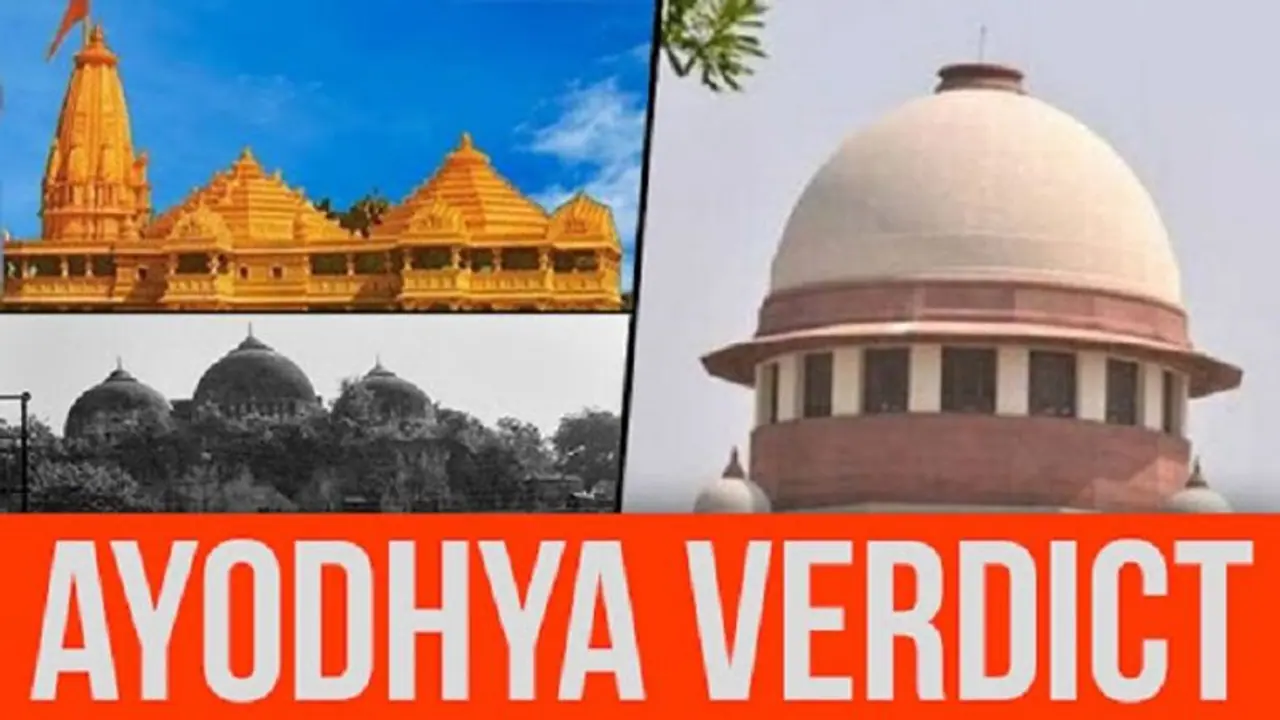The Supreme Court has decided to give the disputed land to Ramjanmabhoomi Nyas and Centre will form a Trust to build a temple on it. The Apex court said that Muslims will be given an alternate land of 5-acres to build Mosque.
New Delhi: The five judge bench of Supreme Court unanimously decided to give the disputed land to the Ramjanmabhoomi Nyas and the Centre will form a Trust to build Ram temple.
The top court has also directed the allotment of an alternate land of five acres to the Sunni Waqf Board, said the SC verdict. Centre has been given three months’ time to form the Ayodhya Trust and the land promised to the Sunni Board will be handed over to the Trust.
The five acres of land for the Muslims can be out of the land acquired by the Centre in 1993.
Reading out the verdict, Chief Justice Ranjan Gogoi said, “Places of Worship Act reaffirms commitment of India to protect the interests of all religious communities. Babri mosque was built by Mir Baqi. It is inappropriate for the Court to get into area of theology.”
Chief Justice of India Ranjan Gogoi while reading out judgement also added, “This court must accept faith and accept belief of worshippers. Court should preserve balance.”
Supreme Court concluded its 40-day marathon hearing on Ayodhya on October 17. The verdict was reserved.
Five judges bench led by chief justice Ranjan Gogoi, Justice SA Bobde, Justice DY Chandrachud, Justice Ashok Bhushan and Justice S Abdul Nazeer delivered the historic judgement.
The Constitution Bench was set up on January 8, 2019.
Ranjan Gogoi who is going to retire on November 17 is the 46th Chief Justice of India, who delivered a historic judgement that was pending since 70 years.
Meanwhile, the SC dismissed plea of Shia Waqf Board against Sunni Board on claim to Babri Masjid.
The situation across the country is being monitored with CCTV cameras in sensitive areas, especially in Mumbai. Also, restrictions have been imposed in Jammu and Kashmir ahead of Ayodhya verdict.
The verdict also reads, that the Court must accept faith and belief of worshippers.
- Excavation supports conclusion of ASI that there was an underlying structure which was not of Islamic origin. Artefacts discovered from the site show pre-existing non Islamic structure. ASI conclusion could suggest that there was a temple built in the 12th century. However, ASI has not specifically said that the underlying structure was a temple. ASI is silent on nature of temple.
- ASI report has left unanswered a critical part of its remit, namely whether a Hindu temple was demolished to construct the mosque.
- Between the 12th century and the 16th century when the Mosque was built, there is no archaeological evidence of what existed.
- Hindus consider ayodhya as birthplace of Lord Ram. Faith and belief of Hindus is that Ram was born in the inner sanctum of the three domed structure named Babari Masjid.
- Both Hindus and Sunni witnesses have testified to faith into the structure.
- Namaz was being offered in the inner courtyard and pooja was being performed in the outer courtyard. Inner courtyard has been a disputed site, whereas Hindus are unimpeded possession of outer court.
- Submission that Mosque was unislamic was rejected.
- Babri Mosque not built on vacant land, says SC.
